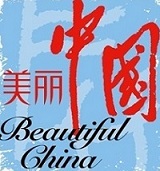Souvenir shopping in Nepal

By Bhesh Jung Badal —
While travelling a foreign country, one of the interests of the tourists, apart from seeing the country and learning about its people, is to take photographs and buy some objects native to that place. Every country has their specialties and Nepal is no less. Nepalese craftsmanship in certain fields is highly appreciated by tourists. Some of the big business-men from abroad come and explore Nepalese craft. These are some of the Nepali souvenirs, the visitors like most during their visit to this county.
Carpets
Nepal’s largest export item are the Nepal made Tibetan Carpets. These are very expensive in the developed countries but is available at low price here. The techniques used in the manufacture of carpets are traditional Tibetan, where high quality handspun wool of Tibet and New Zealand are woven. Designs range from neo-Tibetan to the modern abstract ones in bold and bright colours. Superior quality European chemical and vegetable dyes are used which are color fast, in making fine carpets.
Prices vary according to size, designs and knots. A 100 knots per square inch carpet usually cost more. One must be careful in buying carpets because carpets of inferior quality are also sold in the market.
Gems
The continent of Asia is famous for its precious stones and jewels, but the widest selection of these gems can be bought in Kathmandu at prices which are remarkably low. Name any stone from Topaz to Lapis Lazuli. you can get it here. Tourmaline being Nepal’s highest quality gem.
Without proper knowledge of the characteristics of original gems, it is very difficult to assess unless bought from a shop that can be trusted. Nepal does not mine Topaz. The common local name given to the lovely yellow citrine Is “Golden Topaz”. Fine deep purple amethysts are produced in Nepal apart from soft pink sapphires. The inexpensive stones are admitted by the dealer to be artificial.
Jewellery
Nepal has been in the lime-light when it comes to originating or making a replica of a design in gold or silver. Be it an ear-ring, necklace, bracelet. ring or any other item, it is made ready for delivery in a few days’ time. Silver beads that are traditional are made in Patan. Beads made of glass charms the buyer. A market for beads is found close to the centre of the capital near Indra-Chowk. A variety of Tibetan jewellery is sold in shops near Buddhist temples.
Metalwork
The molding of metals such as copper, bronze, brass into statues of Buddhist deities in the Tibetan style and Hindu images is one of Nepal’s oldest and living craft traditions. In a statue, the specific pronunciation of parts such as fingers, eyes which are skillfully painted, at-tractive pleasant faces and non-existence of pits or spots is formidable.
Woodcarving
Woodcarvings on temples and houses is a common sight in Kathmandu. The designs carved are traditional and are produced in all sizes. These intricate carvings can be found on doors and windows as well as smaller items such as jewellery boxes, picture frames and wall decorations.
Handloom and Printed Cloth
A variety of cloth is produced in different parts of Nepal. Hetauda. Balaju. Bhaktapur, to name a few, produce, cloth for hats, blouses. Daura Suruwal (the national costume), Dolpo blankets, colorful block-printed handlooms and soft Pashmina woolen shawls are also available in the market.
Thangkas
Tibetan scroll paintings of Buddhas, mandalas, and meditation deitiec are known as Thangkas. These are hung in the shrine rooms of monasteries and private homes. Traditional Thangkas used vivid colours of grounded mineral pigments. The modern ones use modern materials such as pastel colours and are not as expensive as the old ones. The skill endowed in painting the tiniest figures without disfiguring or distorting the faces or hands is the key to its genuineness. Wood smoke is used for ageing Thangkas.
Masks
The Nepali people of Hindu community perform ritual dances at festivals wearing masks that are replicas of the image they depict. These masks which are bright are made of Nepali paper, mud or wood and are available everywhere in Kathmandu valley.
Other items of interest that are readily available all over the valley are khukuris, incense, handmade paper. prayer wheels. Tibetan curiosities, silk purses, puppets. filigree work. handknit sweaters. readymade and tailored doming and tea.
Antiques
Nepalese antiques are part of the country’s rich artistic heritage. Such articles are expensive and are subject to customs restrictions leading up to confiscation. The buyer is advised to get a certificate from the dealer, and if still doubtful, one from the Department of Archeology, to avoid disappointment on departure. Artificial antiques of masks, statues. paintings. etc. is another of the accomplished crafts of Nepal. Craft salespersons of Nepal are generally honest about the originality or age of their wares. Authentic Nepali and Tibetan antiques are increasingly rare and difficult to find.
Cargo
There are dozens of reliable transport agencies who take care of transporting cargo according to demands made. Careful packing before being shipped or airlifted, with contacts to reach its final destination in case of no direct link, are some of the services offered and rendered to customers.
Nepal has a good reputation for craftsmanship. The prices are reasonable on inspection of the work done on the item. It is but natural that a piece of good work will demand a higher price.
June 2020 Image: Travel Biz News














